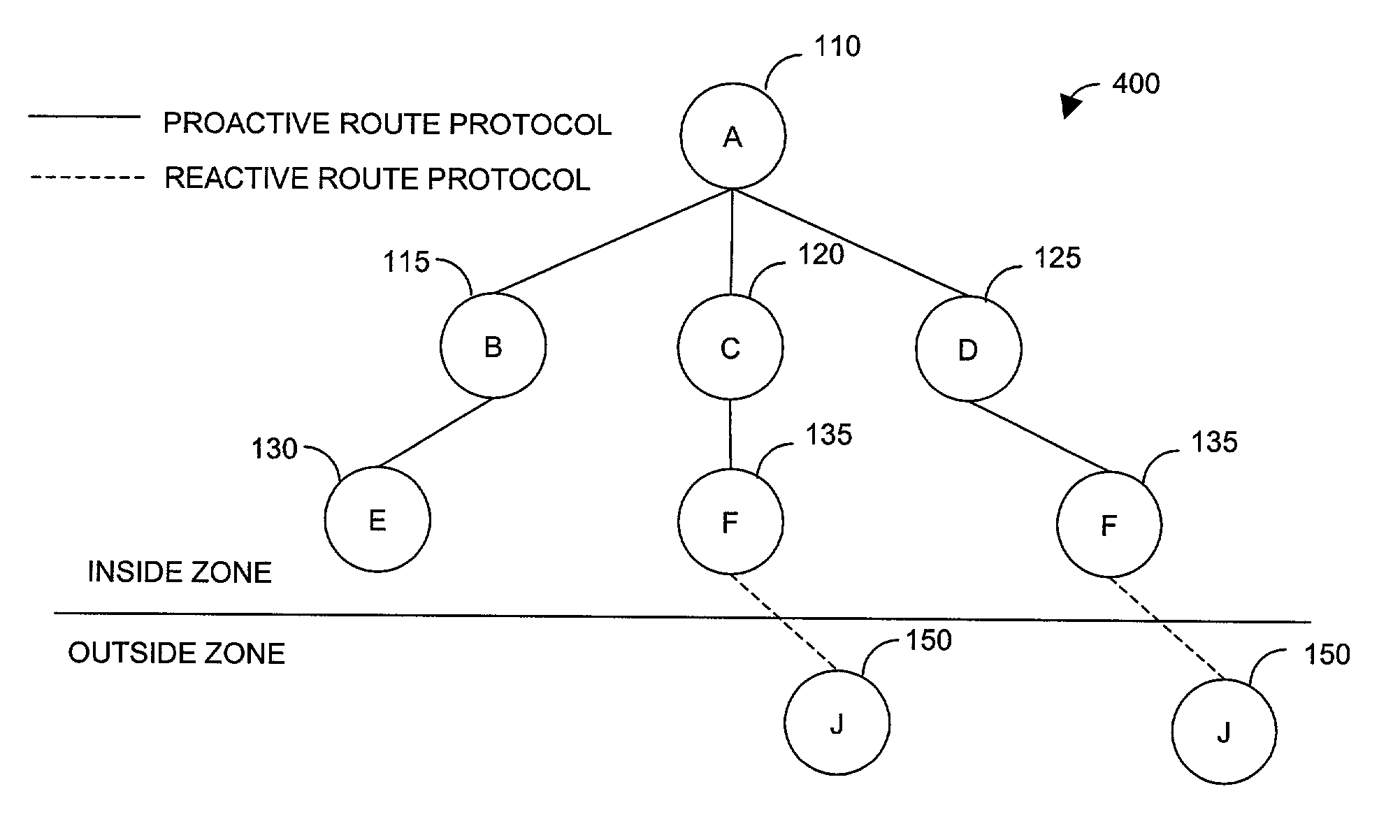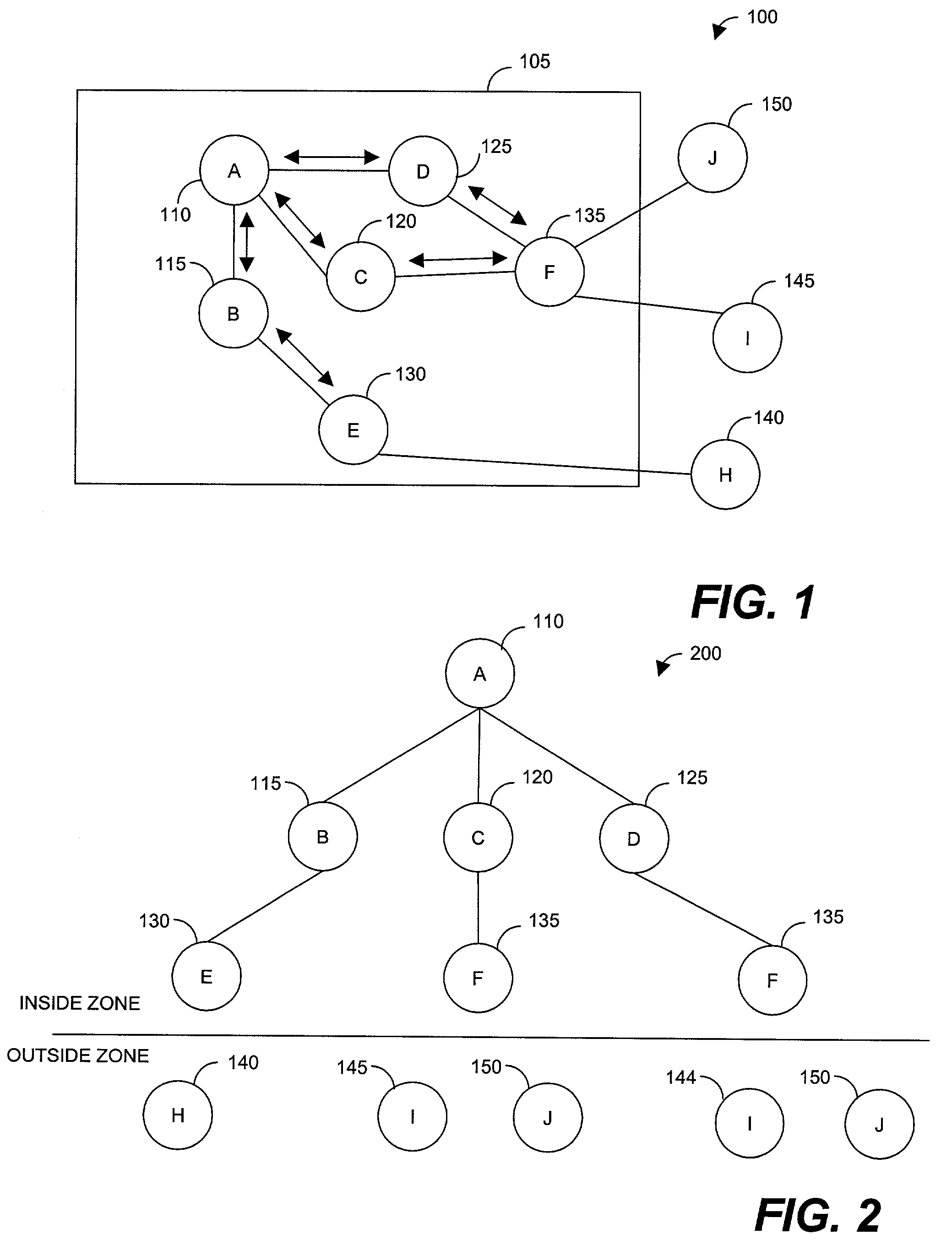Wireless routing protocol for ad-hoc networks
a wireless routing and network technology, applied in the field of routing protocols for ad-hoc networks, can solve problems such as temporary removal of armored vehicles from routing zones, and achieve the effect of metricing the quality of servi
- Summary
- Abstract
- Description
- Claims
- Application Information
AI Technical Summary
Benefits of technology
Problems solved by technology
Method used
Image
Examples
Embodiment Construction
[0040]The present invention is embedded in a software application program that manages routing between nodes in an ad-hoc network. The software application program is known as “Wireless Ad hoc Routing Protocol” (WARP). WARP uses a hybrid protocol, with additional enhancements for Quality of Service (QoS) support. The WARP software functionality is broken up into several processes. WARP's Neighbor Discovery Protocol (NDP) locates one-hop neighbors. WARP's Proactive Routing Protocol (PRP) is a timer-based link-state routing protocol. It allows both best-effort routing based on hop-count and QoS routing based on wireless-specific routing metrics such as link-stability and a node's energy status. WARP's NDP and Reactive Routing Protocol (RRP) are separate from its PRP to allow flexibility in porting to handheld devices and microsensors. WARP's RRP uses explicit source routing that provides end-to-end QoS support in conjunction with PRP. The major difference with DSR is that WARP's RRP i...
PUM
 Login to View More
Login to View More Abstract
Description
Claims
Application Information
 Login to View More
Login to View More - R&D
- Intellectual Property
- Life Sciences
- Materials
- Tech Scout
- Unparalleled Data Quality
- Higher Quality Content
- 60% Fewer Hallucinations
Browse by: Latest US Patents, China's latest patents, Technical Efficacy Thesaurus, Application Domain, Technology Topic, Popular Technical Reports.
© 2025 PatSnap. All rights reserved.Legal|Privacy policy|Modern Slavery Act Transparency Statement|Sitemap|About US| Contact US: help@patsnap.com



